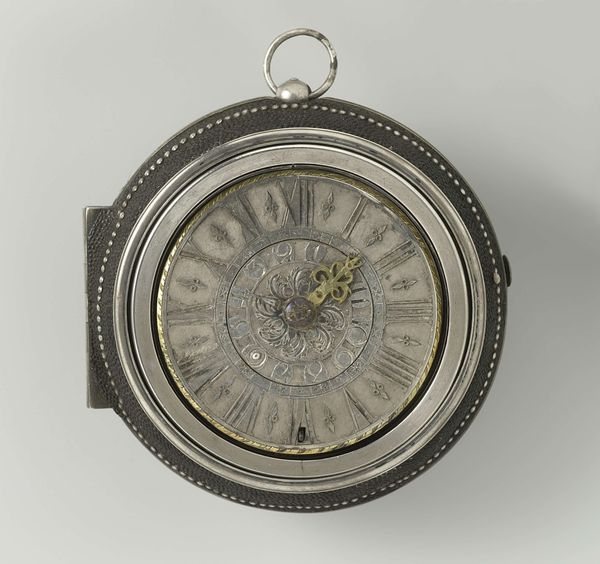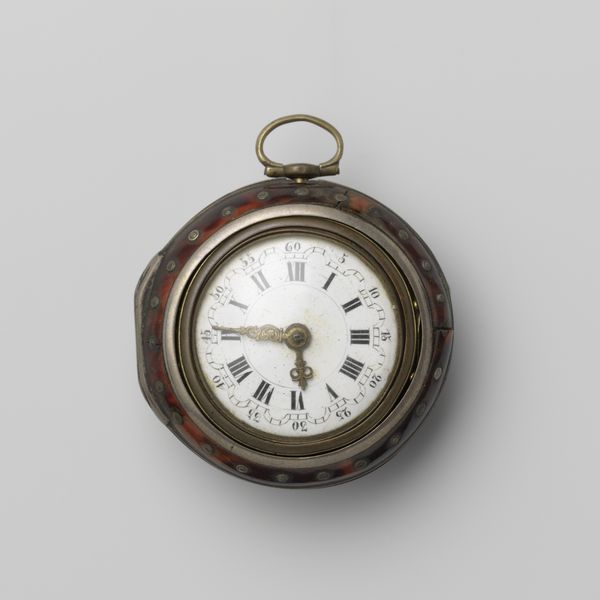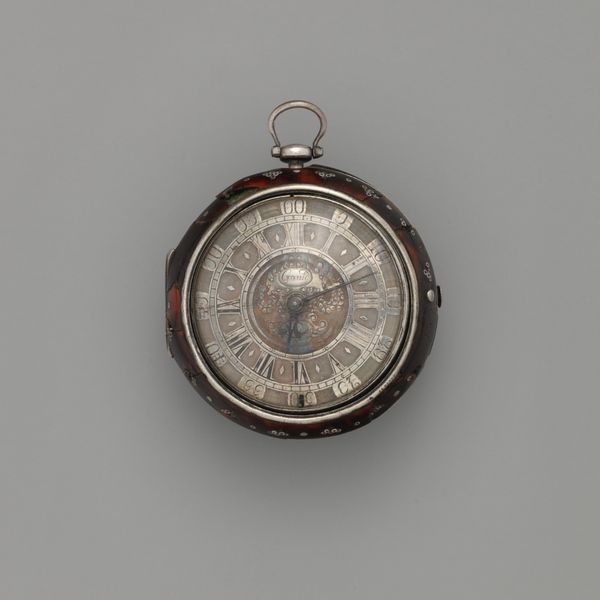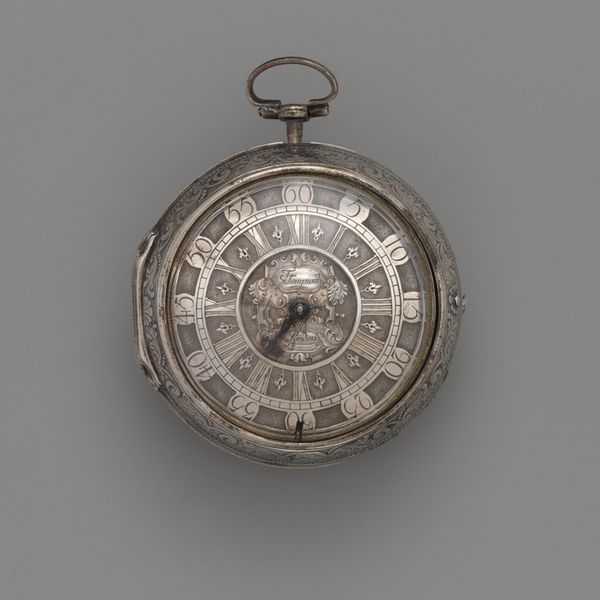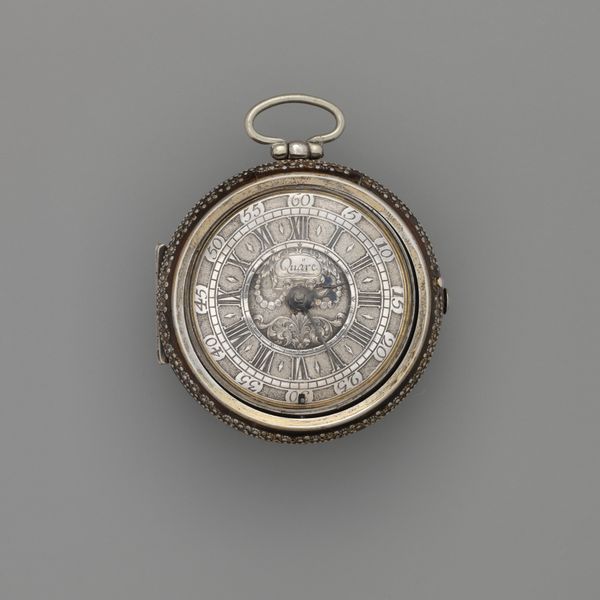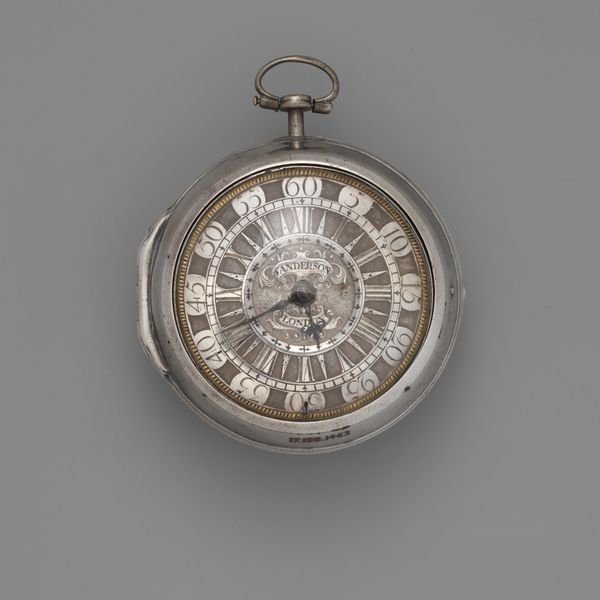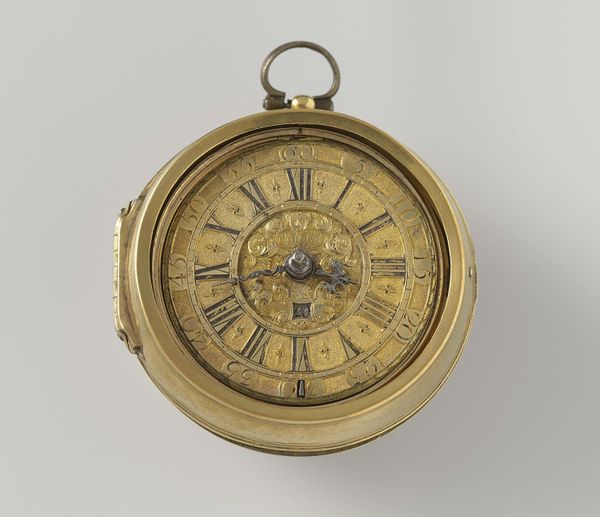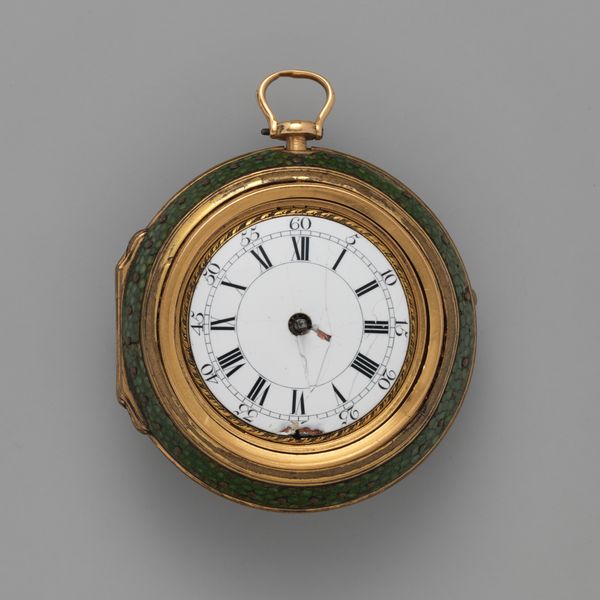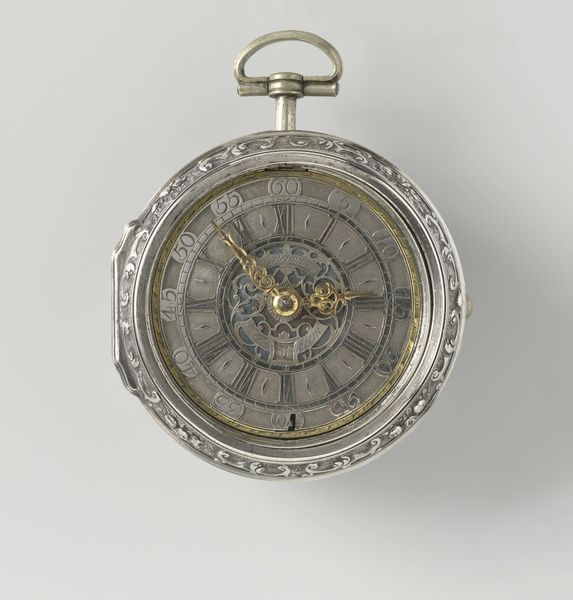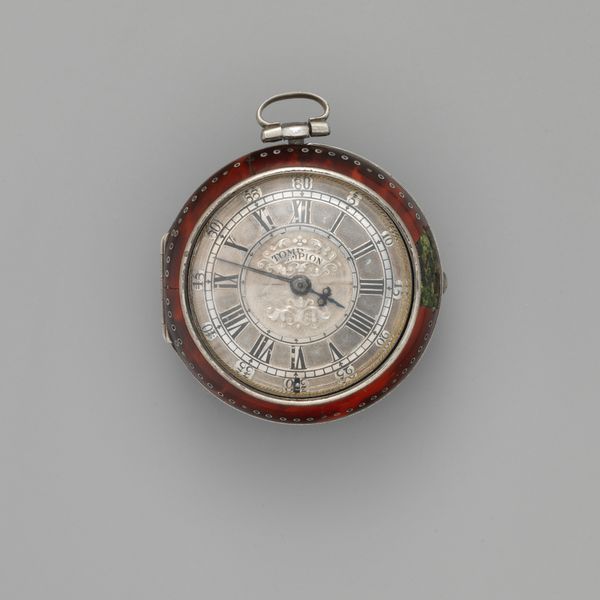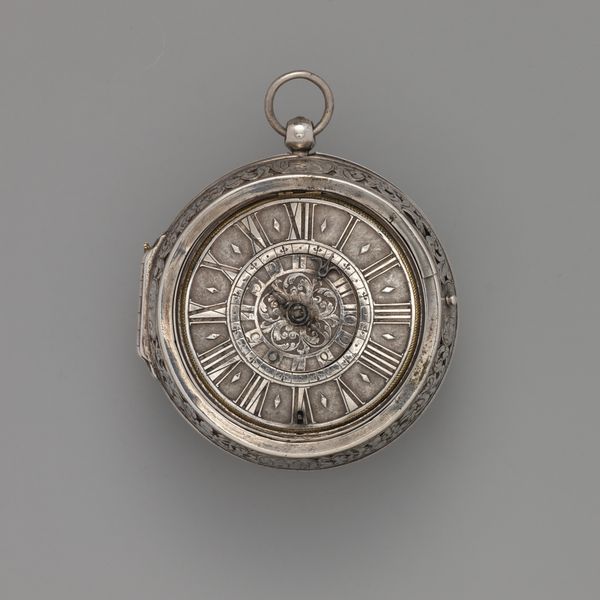
Dimensions: diameter 5.5 cm, height 6.8 cm, width 6 cm, depth 3 cm
Copyright: Rijks Museum: Open Domain
Editor: This is a pocket watch from around 1775, made by Hermanus Huyslandt. It’s crafted from metal and features a miniature depiction of a whaling scene. The level of detail is incredible. What’s most striking to you when you look at it? Curator: For me, it’s impossible to separate an object like this from its context, specifically the social and economic forces at play in the 18th century. Whaling was a massive industry. Owning something depicting it—a luxurious item, no less—speaks volumes about one’s position within that system. Does it make you consider that at all? Editor: Absolutely. It’s easy to admire the craftsmanship without thinking about where the materials came from, who benefited, and at whose expense. But it seems like more than just economics is represented; it's a specific narrative too, right? Curator: Precisely. Think about the imagery selected. Whaling, depicted on a personal item like a watch, moves it from a purely practical industry into a display of power, even dominance over nature. The watch becomes a statement. Do you think that statement remains clear across time? Editor: That’s an interesting question. The immediate aesthetic still speaks, but those layers of social commentary certainly fade without historical knowledge. Curator: Exactly. And it makes you wonder what the intended audience was. Who was meant to see this watch and interpret its meaning? That’s part of what makes studying art history so interesting. Editor: I agree, seeing art as embedded in these networks and historical moments makes it come alive. Thanks! Curator: My pleasure!
Comments
No comments
Be the first to comment and join the conversation on the ultimate creative platform.
